We all know the image of meditating Shaolin Monks, Samurai and other martial artists from the Far East. But how does meditation work in combination with a Western martial art like (kick)boxing? In this article, I’ll explain how the best of these both worlds strengthen one another.

In essence, meditation trains your focus. When you’re focused during kickboxing
- You have more control over the power, speed and coordination of your muscles
- You are better at understanding and processing instructions
Also, during meditation you program your brain, which helps you learn faster.
But how does that work, exactly? Isn’t meditation all about reaching a state of enlightenment? And if there are so many advantages, why isn’t everyone meditating? Read on for the answers, helpful tips, and simple meditation techniques to get started.
Why is it hard to focus during meditation?
Meditation is meant to focus on “calming the mind,” by letting go of thinking, planning and/or judging so that you can just be aware. However, since our everyday consciousness largely consists of doing exactly the opposite, it usually takes an active effort to focus and calm the mind in meditation.
In our daily lives, we constantly think, plan, and judge in order to determine what choices and actions will help us satisfy our primary needs like food and housing. Moreover, Western education trains us from a young age onward to primarily develop and express these mental capacities. For example, in school we’re asked to articulate and defend opinions about X, Y and Z – regardless whether we truly care about X, Y or Z. While that’s not necessarily good or bad, holding all these opinions results in a constant conversation in your head that seems to go on auto-pilot, which makes it hard to focus on quieting your mind.

Why is focus important in meditation?
When you focus (e.g. on your breath) you fully occupy your mind with breathing. That means that you aren’t thinking, planning or forming judgments about anything. This way, you can reach a meditative state in which your mind empties and your awareness – of your body, mind, and emotions – increases.
If you practice this regularly, your focus will improve and your awareness – mindfulness – will grow. Moreover, by improving your focus and awareness, meditation influences all facets of your life.
Does meditation help with martial arts?
Meditation trains your focus and awareness, 2 vital aspects of martial arts: you need to focus on what’s right on front of you (the bag, your opponent/partner or sensei), and you need to be fully aware of your body and target, and their positions in space, to practice your techniques effectively.
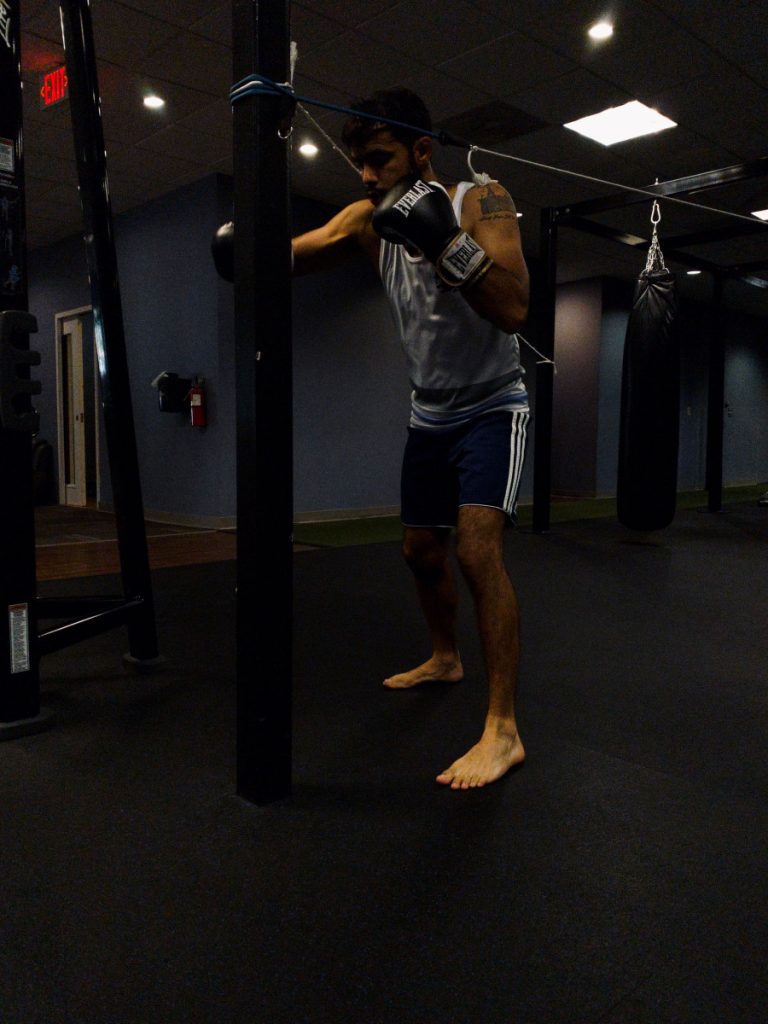
By increasing your focus and awareness, meditation also helps you to control your emotions. While emotions can definitely give you that extra bit of fuel in times of need, failing to control them makes them controlling you. This means that they can burn you out, and cause your movements to become so erratic that you risk injuring yourself and/or your training partner. In the best case, this causes your training to run short, but in the worst case, you and/or your training partner are disabled for a long time – or even permanently.
So while martial arts – a practice where disabling and/or submitting one another is the main goal – gives plenty of reasons to become angry, sad or scared, neither of these emotional responses are helpful when they take control of you. Regular meditation, then, is a powerful tool to help you deal with them.
Is meditation good for (kick)boxing?
Research shows that punching or kicking hard isn’t necessarily a consequence of muscle strength but primarily of brain control over your muscle. Accordingly, increasing your focus and (physical) awareness through meditation is a powerful tool to improve your (kick)boxing.
This is actually quite logical, because punching/kicking power – like any other power – is determined by the Newton’s 2nd law: Speed x Mass. So, do you want more powerful punches, kicks or knees? Then you have to increase the speed or mass of your attack. Or both.
The mass of your attack you increase by flexing your muscles. However, as you’ve probably noticed before, flexing your muscles slows down your movement. So, by flexing your muscles, and thus decreasing your speed, you won’t gain much power.
How can I increase my punching and kicking strength?
To punch and kick harder, you need the to increase your speed and mass at the moment of impact. This requires 3 steps:
- Explosively activate your muscles to generate speed
- Relax your muscles during the technique to prevent losing speed
- Flex your muscles upon impact to increase your mass
In addition, you need to perform the technique properly so that your attack moves efficiently toward your target.
Every inefficiency during a punching or kicking technique is like a leak where your power seeps away through.
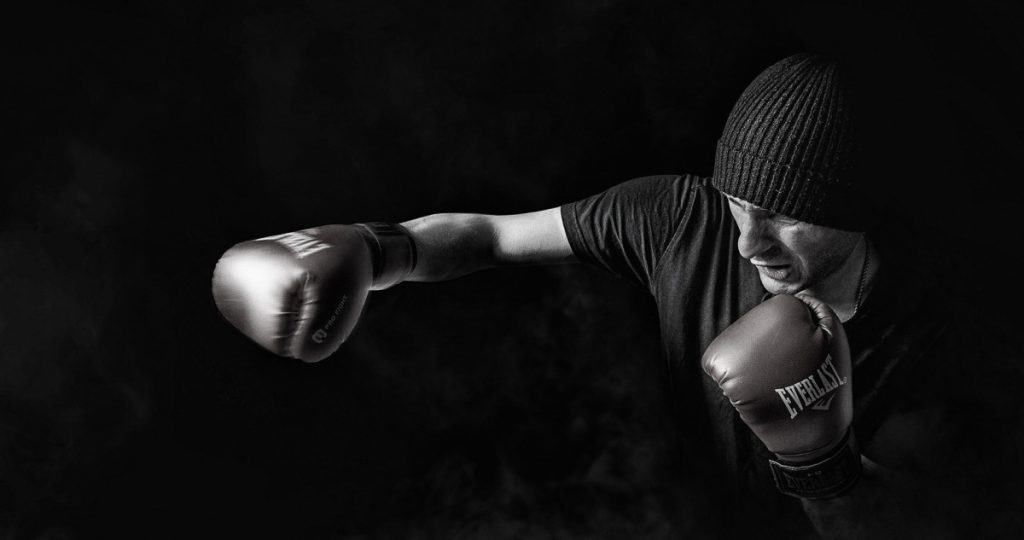
Inefficiencies are caused by losing balance or when your elbow is lower than your fist upon the impact of a hook punch for example. To generate optimum power, every shackle of a hook punch – foot, ankle, knee, hip, torso, shoulder, elbow, wrist, and fist – has to move in perfect alignment. The same goes for high kicks and any other striking technique.
In order to do this, you need full focus and awareness so that you can:
- Generate explosion in the right muscles
- Relax after exploding so that you don’t lose any speed
- Technically guide your explosive power
- Stay coordinated in order to move efficiently
- Flex your muscles at the right moment in order to increase your mass upon impact
Of course, in the heat of battle you won’t be focused on these 5 steps – you “just” throw a kick, punch, or knee. This happens from muscle memory. However, in order to program your muscle memory properly, you need full focus and awareness so that you train your brain to do these 5 steps every time you throw a strike.

Does kickboxing help with mindfulness?
Mindfulness – to be fully aware of where you are and of what you’re doing – is an essential part of kickboxing. During kickboxing, you train such awareness by consciously moving your body in space and deliberately activating specific muscles in order to time and hit your techniques effectively.
In addition, when it comes to technique training there’s far more than simply listening to your sensei explaining a technique. Rather, you need to observe into extreme detail.
What are the arms, hands, and elbows doing throughout the technique; how are the shoulders and hips moving; how is the power generated; when is the speed increased; in what angle are the feet positioned at the moment of impact; and how do you move to a safe place after the technique?
And yet it’ll be your turn to practice the technique far before you’ve figured all those things out and grasped the full scope of the technique. In effect, kickboxing teaches you mindfulness in practice: by seeing, trying, and doing the technique, and then again seeing, reviewing, and trying again and again, you slowly become more aware of where you are and what you are doing at each stage of the technique. Ultimately, you will master the technique in its entirety and be able to practice it in a complete state of mindfulness.
How can mindfulness improve your learning?
First, you need to visualize you doing the technique. How does the movement look and how does it feel; how do you move from your current position to land the technique? For this, you need to know what your posture and position is – something you register through proprioception, or your “6th sense.”
For some, this process is instant: they see a technique and they repeat it without a single thought. Sadly, this is not the case for most of us, and even for those natural talents it isn’t always that easy.
Sometimes you just have a hard time filtering or processing the information, other times you miss 90% of the technique, and again another time it’s just one essential detail. And so there are plenty of other reasons, but as the naturals show us – overthinking is the last thing you should be doing about it.
So, if you find yourself getting stuck on a technique, take a step back, breathe – tap into your awareness and observe yourself. It’s not about power or speed during technique training, it’s about feeling the technique; feeling where and how you could generate the power and speed that you need in sparring and fighting. Being mindful of this, then, will guide your feeling rather than understanding of how you need to move to execute the technique properly.
Understanding always takes longer than feeling. When it comes to sparring or fighting, thinking and understanding is too slow – you need to be able to feel, act, and execute your techniques without thinking about them! That’s what technique training ultimately prepares you for: to have done a technique so many times that you feel, rather than know, how to do it right.
What happens to your brain when you meditate?
When you start meditating, your brain waves shift to alpha frequencies. In this state, stress and anxiety levels go down, and you become focused. Moreover, in deep meditation you stimulate theta frequencies, the relaxing waves that you also experience during light sleep, trance, and imagination.
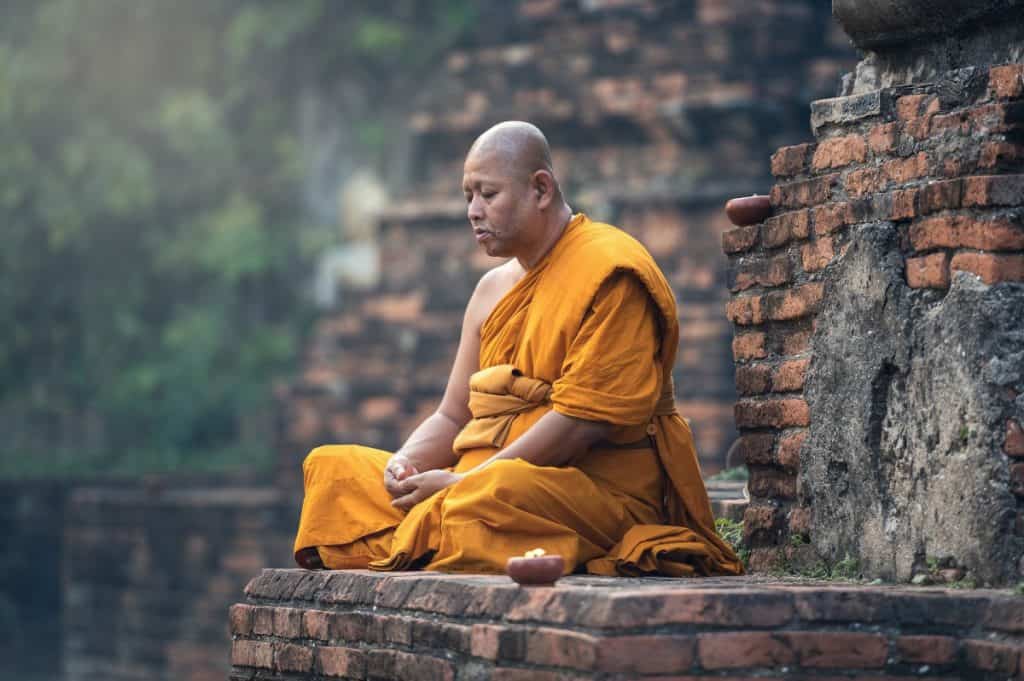
This is in stark contrast to our “regular” everyday brain waves. During the day, we generally focus on the things around us (the outer world), which puts our brain waves in beta or gamma frequencies. Beta frequencies occur when we’re busy and active and when we experience stressful situations. Gamma frequencies arise when we concentrate or try to solve problems.
When we focus less on the outer world and more on our inner worlds, for example during visualization, daydreaming and fantasizing, alpha frequencies increase. While we usually do these things unconsciously, meditation is a technique that enables you to stimulate alpha frequencies at will. With your stress and anxiety levels down, your creativity increases – a state that’s perfect for activities like pre-fight visualization.
How does meditation help learning?
In deep meditation, your brain waves shift into theta frequency. In this relaxed state, your brain’s focus turns inward in order to learn, self-program, and recover. Much of our learning process, accordingly, happens when we relax – during light sleep or when we enter into deep meditative states.
So, those 50 low kicks that you practiced in the dojo “sink” into your muscle memory when you go to sleep at night. Or during deep meditation. Meditation, then, helps your learning process twofold. First, it trains your focus, which you helps you to learn when you’re in the dojo and get most out of your training sessions there. Second, it puts you in a state of recovery during which your brain starts self-programming. This way, you have a chosen moment besides your sleep to let your training sink in.
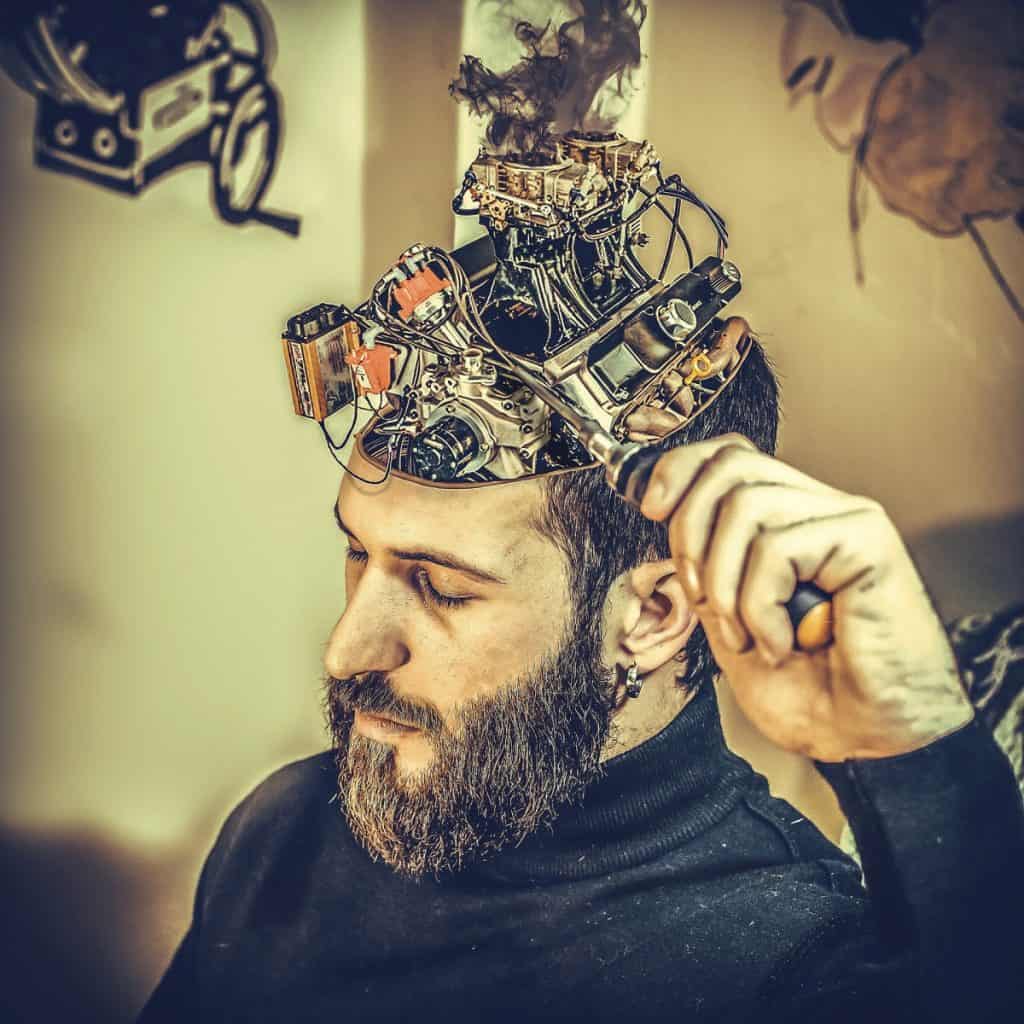
How do I meditate as a beginner?
Find a place with as little distraction as possible (turn your phone off). Sit down or walk calmly and focus on your breath – follow it in and out of your body. Whenever you realize that you’re thinking (again), acknowledge the fact, accept it, leave it, and shift your focus back to your breath.
The latter part is the hardest part. We tend to judge our thoughts and emotions instead of accepting them. Before you know it, you’ve had another 10 thoughts and felt all kinds of things – with their accompanying judgements. However, the fact that it’s hard doesn’t mean that you’re doing it “wrong” if you don’t immediately succeed. Meditation is a practice, and as with any practice, it takes time and devotion to get better at it.
Still, if you meditate more regularly, you’ll notice that your focus improves and that it’ll take a little longer before your thoughts disrupt it. Moreover, it’ll get easier to observe those thoughts and letting them go, instead of pairing them with all kinds of emotions and feelings, and then judge them. This way, you’ll start to experience an inner peace during meditation – reflected in your brain by those alpha and theta frequencies.
When meditating do you breathe through your nose or mouth?
Try to breathe through your nose, but if you have a hard time with this, breathe through your mouth with pursed lips. This way you automatically slow your breath down. Start with following your breath going in and out of your nose/mouth, and follow it further down your body as your focus increases.
If you want to try having guidance during your meditation, there are apps like “HeadSpace” and “Waking Up,” and various YouTube videos, podcasts, books, and (online) courses. Maybe there’s even a meditation center or guru close to you. It doesn’t matter which way you do it, as long as you do it.
How long should you meditate as a beginner?
If you’re new to meditation, it’s important that you make it easy to do it. So, make it accessible by meditating only a few minutes – 3, 5 or 10 minutes already go a long way! Choose a number that you can fit into your schedule for multiple days a week. The first key to meditation is consistency.
Sitting in meditation can be physically uncomfortable if you’re not used to it. “Meditation pillows” are specifically designed to help you sit with a straight back. This way you’ll sit more comfortably and be able to breathe better.

When you begin your first meditation, set a timer for the amount minutes that you have decided on. Then, get comfortable, stretch for a little bit, and follow the steps as described above. When you finish, take a moment to plan your next session (day and time!) before you go on with the rest of your day. This way you already give meditation a place in your life.
Since meditation involves implementing a new routine, sooner or later you’ll be dealing with your habits. And habit is a powerful force – often too powerful to “just” combat with motivation or discipline. That’s why it’s all about making it easy for yourself: a few minutes of meditation planned ahead so that you don’t need willpower to “decide” on it in the moment anymore.
As you get comfortable meditating and feel that it’s becoming a “habit” in and of itself, you can adjust your meditation time as you feel like. Keep in mind that adjusting your meditation time involves changing your habit, so make sure it remains the “easy” choice.
How long does it take to reach enlightenment?
Once you’re able to observe your thoughts and emotions instead of being taken away bythem, you’re creating distance between you and your ego. In this state, you don’t identify with your thoughts and feelings and are thus not “burdened” by them. Unburdening yourself is a first step to enlightenment.
What exactly a state of enlightenment is a matter of definition. Still, shedding yourself from the burdens of your own judgement will lighten you, whether you consider it enlightenment or not.
Experiencing a distance from your ego is often a temporary state, because your ego will immediately try to identify with that new state – with your mind, your higher self, God, whatever you like to call it. This isn’t necessarily a bad thing, because not identifying with anything – experiencing an ego death – can leave you feeling aimless and lost. However, the challenge is to recognize the tendency of the ego to identify with whatever state that you are in. If you can recognize that this is simply a tendency – useful to navigate the world nonetheless – and not an absolute truth of being, then you’re already a little enlightened from the burden of having to identify with whatever you think and feel.
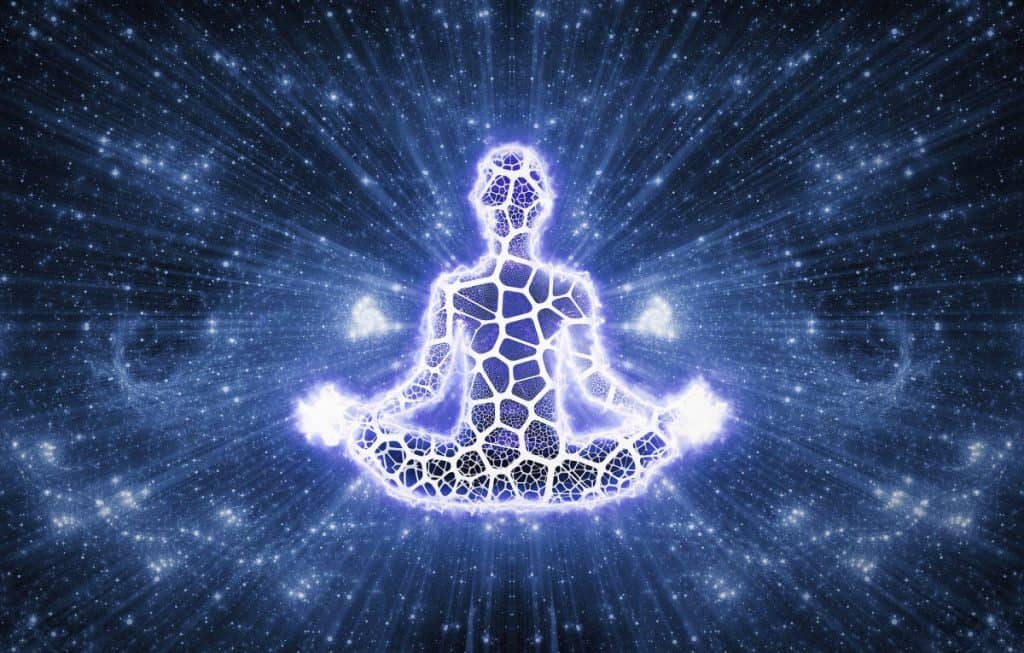
So, when exactly you’ll reach a state of enlightenment I cannot tell you – you will feel so yourself. For most people this requires a lot of meditative practice, and even that doesn’t guarantee anything. Fortunately, that doesn’t matter because meditation has plenty of benefits without ever “reaching enlightenment.” And if you enjoy meditation and/or its benefits, you’ll automatically be drawn to ways that deepen your meditative practice.
What are some alternatives to meditation?
Practices like yoga, tai chi, and qigong consist of meditative movements and exercises. During these practices, you focus on synchronizing your breath with your movement. In this process, you become mindful of your breath and body, and you let go of your thoughts, judgements, and emotions.
Originally, yoga was what we now call meditation. The movements, poses, and stretches that we now associate with the activity of yoga were actually added later on.
These practices are also a good preparation for a “regular” meditation session. They already put you into a mindful state and they warm and stretch your body, which makes it easier to sit with a straight back and focus on your breath.
Also “simply” being in nature is meditative for most people. In this, it is of course vital that you can immerse yourself into the nature, so leave your smartphone in your pocket (in flight mode) or at home and leave your ears free to listen to the ambient sounds of nature. This way you can fully see, hear, smell, and experience the nature around you.

As I alluded to earlier, your brain waves respond to what you are doing and to what happens in your surroundings. Accordingly, both these alternative practices and being in nature can stimulate the same brain waves as the ones we experience in meditation.
Do binaural beats change brain waves?
Yes, binaural beats play two different frequencies in your ears at the same time: one frequency in the left ear and another in the right. Your brain, in turn, adapts to this by vibrating on the frequency in the middle. In effect, binaural beats are able to “hack” specific brain wave frequencies.
Thus, by listening to binaural beats, you can stimulate any desired brain wave frequency – also those alpha and gamma frequencies you get during meditation.
- Alpha (8-14 Hz) for a relaxed focus
- Beta (14-38 Hz) for alert energy
- Gamma (38-80 Hz) for concentration
- Theta (4-18 Hz) for light sleep, recovery, and self-programming
- Delta (0,5-4 Hz) for deep restful states
Since binaural beats are essentially a humming sound, many tracks have music or ambient sounds added to them. My favorite track simulates theta frequencies, which I love to listen to during a powernap. Although it usually doesn’t feel as if I’m truly sleeping, I always feel better and more rested afterward. Sadly, my favorite isn’t for free, but there are plenty of other binaural beats on YouTube or SoundCloud, and with myNoise you can even make your own!

Can martial arts be meditation?
Most traditional martial arts have meditative elements. They focus on synchronizing breath with movement, and some even begin and end training with meditation. Also, martial arts teach you to master pain, fear, anger, and anxiety instead of being taken over or shut down by such feelings or emotions.
Even the Western martial art kickboxing has traditional meditative roots. The grandfather of Dutch Kickboxing and former Karate practitioner Tom Harinck would start his trainings and matches in Zazen (“seated meditation”), together with his students.
My personal experience is that once I start warming up, the world outside of the dojo starts to disappear as I merge with the training – now during kickboxing, and back in the days during judo, grappling, and MMA. And so I’ve heard many training partners for whom practicing a martial art works meditative as well.
Of course, there are also moments in martial arts that nothing works, that everything is a struggle, and that it feels far from being meditative. But, those moments just exist and we all experience them, also without practicing martial arts. The art is to accept them so they become free to leave you
Still, if you keep training you’ll notice that martial arts improves your focus. And after training you’ll feel a form of enlightenment – lightened from stress, judgement and negative emotions. This way, meditation contributes to kickboxing, and kickboxing contributes to meditation.
- Written by Merlijn Broersma
Recent Posts
The previous articles covered the foundation of fighting nutrition: the best pre- and post-workout meals, fight day nutrition, and what your everyday diet should include. This article will cover the...
Previous articles have discussed pre- and post-workout meals, fight day nutrition, and how to train without eating anything at all, so called “fasted workouts.” That means that there’s one...